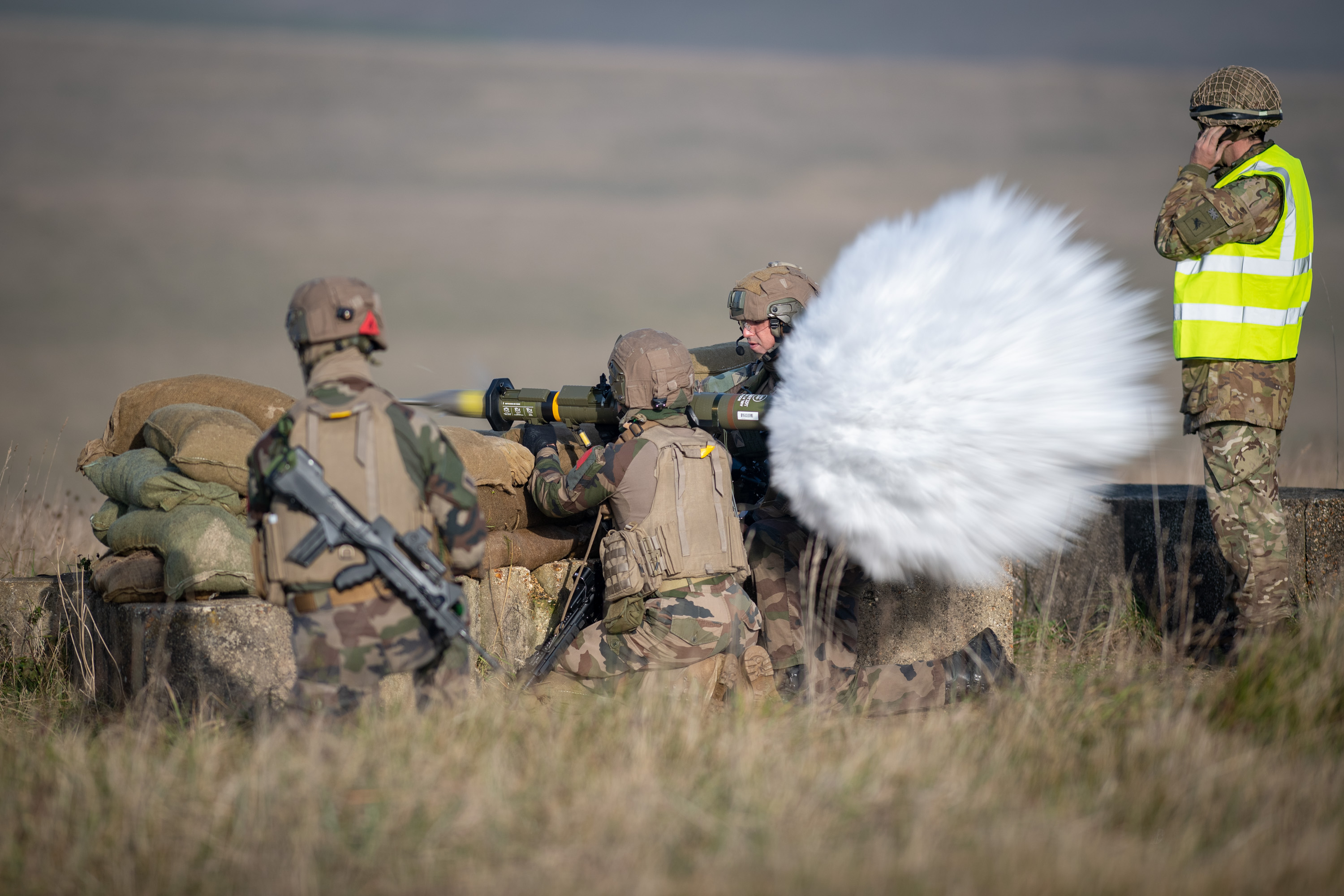|
Battle Of Celaya
The Battle of Celaya, 6–15 April 1915, was part of a series of military engagements in the Bajío during the Mexican Revolution between the winners, who had allied against the regime of Gen. Victoriano Huerta (February 1913-July 1914) and then fought each other for control of Mexico. The Constitutionalists under Gen. Venustiano Carranza faced off against the Army of the División del Norte of Pancho Villa. The first battle of Celaya was fought April 6–7, 1915, near Celaya in present-day Guanajuato, Mexico. The second battle of Celaya was fought April 15–16. These encounters between the Constitutionalist Army led by Gen. Álvaro Obregón, Venustiano Carranza's best general, and the army under the command of Pancho Villa were crucial in determining the outcome of the Mexican Revolution. Obregón chose the site of battle, arrived in advance to prepare it and kept to his defensive strategy, knowing Villa's propensity for blind cavalry charges over an open field. Villa's defeat ... [...More Info...] [...Related Items...] OR: [Wikipedia] [Google] [Baidu] |
Celaya
Celaya (; ) is a city and its surrounding municipalities of Mexico, municipality in the state of Guanajuato, Mexico, located in the southeast quadrant of the state. It is the third most populous city in the state, with a 2005 census population of 310,413. The municipality for which the city serves as municipal seat, had a population of 415,869. The city is located in the geographic center of the municipality, which has an areal extent of 553.18 km2 (213.58 sq mi) and includes many smaller outlying communities, the largest of which are San Miguel Octopan, Rincón de Tamayo and San Juan de la Vega. There are many smaller towns around Celaya including Rincón de Tamayo, Tarimoro, Villagrán, Guanajuato, Villagrán, La Moncada, Panales Jamaica (Cañones), Panales Galera, La Calera, La Estancia, La Noria, Los Fierros, El Acebuche, Cacalote, and Charco Largo. It is also not far away from Cortazar, Guanajuato, Cortazar, Salamanca, Guanajuato, Salamanca, Salvatierra, Guanajuato, Salvat ... [...More Info...] [...Related Items...] OR: [Wikipedia] [Google] [Baidu] |
Line Of Communication
A line of communication (or communications) is the route that connects an operating military unit with its supply base. Supplies and reinforcements are transported along the line of communication. Therefore, a secure and open line of communication is vital for any military force to continue to operate effectively. Prior to the advent of the use of telegraph and radio in warfare, lines of communication were also the routes used by despatch riders on horseback and runners to convey and deliver orders and battle updates to and from unit commanders and headquarters. Thus, a unit whose lines of communication were compromised was vulnerable to becoming isolated and defeated, as the means for requesting reinforcements and resupply is lost. The standard military abbreviation is LOC. There is also SLOC for sea line of communication, GLOC for ground line of communication, or ALOC for air line of communication. The interdiction of supplies and reinforcements to units closer to the front li ... [...More Info...] [...Related Items...] OR: [Wikipedia] [Google] [Baidu] |
Professional Army
A standing army is a permanent, often professional, army. It is composed of full-time soldiers who may be either career soldiers or conscripts. It differs from army reserves, who are enrolled for the long term, but activated only during wars or natural disasters, and temporary armies, which are raised from the civilian population only during a war or threat of war and disbanded once the war or threat is over. Standing armies tend to be better equipped, better trained, and better prepared for emergencies, defensive deterrence, and particularly, wars. Wills, Garry (1999). ''A Necessary Evil, A History of American Distrust of Government'' New York, N.Y.; Simon & Schuster. The term dates from approximately 1600 CE, although the phenomenon it describes is much older. History Ancient history Mesopotamia Sargon of Akkad, the founder of the Akkadian Empire, is believed to have formed the first standing professional army. Tiglath-Pileser III of Assyria (ruled 745–727 BC) created the ... [...More Info...] [...Related Items...] OR: [Wikipedia] [Google] [Baidu] |
Military Education
Military education and training is a process which intends to establish and improve the capabilities of military personnel in their respective roles. Military training may be voluntary or compulsory duty. It begins with recruit training, proceeds to education and training specific to military roles, and sometimes includes additional training during a military career. Directing staff are the military personnel who comprise the instructional staff at a military training institution. In some countries, military education and training are parts of the compulsory education. The organizers believe that military education can bring some benefits and experiences that cannot be obtained from normal class like setback education. Moreover, participants are able to learn more survival skills during the military education, like co-operations and resilience, which will help participants improve the capabilities of military personnel in their respective roles. Recruit training The primar ... [...More Info...] [...Related Items...] OR: [Wikipedia] [Google] [Baidu] |
Train
In rail transport, a train (from Old French , from Latin , "to pull, to draw") is a series of connected vehicles that run along a railway track and Passenger train, transport people or Rail freight transport, freight. Trains are typically pulled or pushed by locomotives (often known simply as "engines"), though some are self-propelled, such as multiple units. Passengers and cargo are carried in railroad cars, also known as wagons. Trains are designed to a certain Track gauge, gauge, or distance between rails. Most trains operate on steel tracks with steel wheels, the low friction of which makes them more efficient than other forms of transport. Trains have their roots in wagonways, which used railway tracks and were Horsecar, powered by horses or Cable railway, pulled by cables. Following the invention of the steam locomotive in the United Kingdom in 1804, trains rapidly spread around the world, allowing freight and passengers to move over land faster and cheaper than ever pos ... [...More Info...] [...Related Items...] OR: [Wikipedia] [Google] [Baidu] |
Military Logistics
Military logistics is the discipline of planning and carrying out the movement, supply, and maintenance of military forces. In its most comprehensive sense, it is those aspects or military operations that deal with: * Design, development, acquisition, storage, distribution, maintenance, evacuation, and disposition of materiel. * Transport of personnel. * Acquisition or construction, maintenance, operation and disposition of facilities. * Acquisition or furnishing of services. * Medical and health service support. Etymology and definition The word "logistics" is derived from the Greek adjective ''logistikos'' meaning "skilled in calculating", and the corresponding Latin word ''logisticus''. In turn this comes from the Greek ''logos'', which refers to the principles of thought and action. Another Latin root, ''log-'', gave rise to ''logio'', meaning to lodge or dwell, around 1380, and became the French verb , meaning "to lodge". Around 1670, the French King Louis XIV created t ... [...More Info...] [...Related Items...] OR: [Wikipedia] [Google] [Baidu] |
Machine Gun
A machine gun is a fully automatic, rifled autoloading firearm designed for sustained direct fire with rifle cartridges. Other automatic firearms such as automatic shotguns and automatic rifles (including assault rifles and battle rifles) are typically designed more for firing short bursts rather than continuous firepower, and are not considered true machine guns. As a class of military kinetic projectile weapon, machine guns are designed to be mainly used as infantry support weapons and generally used when attached to a bipod or tripod, a fixed mount or a heavy weapons platform for stability against recoils. Many machine guns also use belt feeding and open bolt operation, features not normally found on other infantry firearms. Machine guns can be further categorized as light machine guns, medium machine guns, heavy machine guns, general purpose machine guns and squad automatic weapons. Similar automatic firearms of caliber or more are classified as autocannons, rat ... [...More Info...] [...Related Items...] OR: [Wikipedia] [Google] [Baidu] |
Barbed Wire
A close-up view of a barbed wire Roll of modern agricultural barbed wire Barbed wire, also known as barb wire, is a type of steel fencing wire constructed with sharp edges or points arranged at intervals along the strands. Its primary use is the construction of inexpensive fences, and it is also used as a security measure atop walls surrounding property. As a wire obstacle, it is a major feature of the fortifications in trench warfare. A person or animal trying to pass through or over barbed wire will suffer discomfort and possibly injury. Barbed wire fencing requires only fence posts, wire, and fixing devices such as staples. It is simple to construct and quick to erect, even by an unskilled person. The first patent in the United States for barbed wire was issued in 1867 to Lucien B. Smith of Kent, Ohio, who is regarded as the inventor. Joseph F. Glidden of DeKalb, Illinois, received a patent for the modern invention in 1874 after he made his own modifications to previous ... [...More Info...] [...Related Items...] OR: [Wikipedia] [Google] [Baidu] |
First World War
World War I (28 July 1914 11 November 1918), often abbreviated as WWI, was one of the deadliest global conflicts in history. Belligerents included much of Europe, the Russian Empire, the United States, and the Ottoman Empire, with fighting occurring throughout Europe, the Middle East, Africa, the Pacific, and parts of Asia. An estimated 9 million soldiers were killed in combat, plus another 23 million wounded, while 5 million civilians died as a result of military action, hunger, and disease. Millions more died in genocides within the Ottoman Empire and in the 1918 influenza pandemic, which was exacerbated by the movement of combatants during the war. Prior to 1914, the European great powers were divided between the Triple Entente (comprising France, Russia, and Britain) and the Triple Alliance (containing Germany, Austria-Hungary, and Italy). Tensions in the Balkans came to a head on 28 June 1914, following the assassination of Archduke Franz Ferdina ... [...More Info...] [...Related Items...] OR: [Wikipedia] [Google] [Baidu] |
Western Front (World War I)
The Western Front was one of the main theatres of war during the First World War. Following the outbreak of war in August 1914, the German Army opened the Western Front by invading Luxembourg and Belgium, then gaining military control of important industrial regions in France. The German advance was halted with the Battle of the Marne. Following the Race to the Sea, both sides dug in along a meandering line of fortified trenches, stretching from the North Sea to the Swiss frontier with France, which changed little except during early 1917 and in 1918. Between 1915 and 1917 there were several offensives along this front. The attacks employed massive artillery bombardments and massed infantry advances. Entrenchments, machine gun emplacements, barbed wire and artillery repeatedly inflicted severe casualties during attacks and counter-attacks and no significant advances were made. Among the most costly of these offensives were the Battle of Verdun, in 1916, with a combined 700,000 ... [...More Info...] [...Related Items...] OR: [Wikipedia] [Google] [Baidu] |





.jpg)


